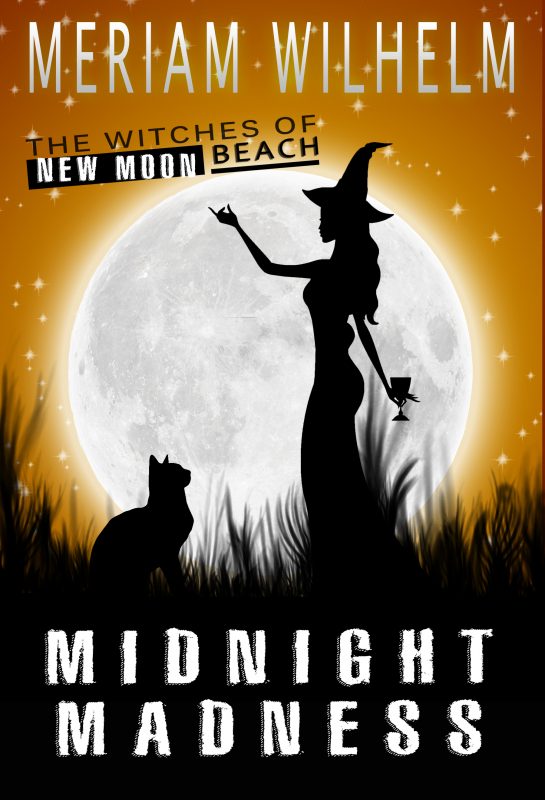Telephone Booths in the 1950s by Will Zeilinger
February 3, 2019 by Janet Elizabeth Lynn and Will Zeilinger in category Partners in Crime by Janet Elizabeth Lynn & Will Zeilinger tagged as Fads, Researching Historical Fiction, the 1950s
Ah, the convenience of a smartphone. Almost all of us have one (or more) of these tiny mobile computers and telephones, in one.
Believe it or not, the first mobile telephone call from a hand-held device wasn’t made until April 3, 1973. Cellular phones and smartphones were still decades in the future.
Now, let’s take a look back to the mid-1950s and see what calling home entailed.

If you were not at home, the first order of business was to find a telephone, and you had better have had a pocketful of change because you paid to talk.
In the U.S., one could find “pay phone” inside a telephone booth or just “phone booth” for short, as they were called, on many street corners and in most commercial establishments. On the street, the ubiquitous phone booth featured a folding glass door that afforded some privacy and protection from the elements. They were not air-conditioned, but when you stepped inside and closed the door, an overhead light would come on. That feature was especially helpful at night. By the mid-1950s, most were upgraded from a wood and glass structure to a weatherproof glass and aluminum booth that was large enough for one (maybe two, if you were friends).
If you’re too young to have seen one in person, you’ve no doubt, seen them in old movies and TV shows.

They were found inside almost any hotel, train station, bank, restaurant or office building. You would have seen rows of wooden phone booths lining a wall somewhere near the entrance. Many of them had a seat inside for long conversations. During breaks between the action at conventions or meetings, people would line up to use the half dozen or so telephones in larger hotels, and in smaller hotels, there may have been two or three.
Today many hotels and convention spaces have mysterious empty areas that will cause the visitor to wonder the reason behind the wasted space. The answer is telephone booths once stood in those places before they were removed because they were no longer needed.

To make a call you would first deposit a nickel or dime in one of the round holes at the top. “Dial” it on the rotary dial . . . one digit at a time. A live telephone operator would come on the line and tell you how much money to put in, based on the number. If you didn’t know the person’s number, you’d look up the person by name from the telephone directory book, suspended under the phone. If you needed to make a long distance call, the live operator would handle that for you as well.

Since the 1950s were part of a decade of fads, one popular fad was “Phone Booth stuffing.” The point of this was to see how many people would fit into a phone booth designed for one person. From what I could learn, the record for cramming the most people into a standard sized telephone booth was 25. This was accomplished by a group of South African college students.
Too many people? You want a little privacy when you make a phone call? In today’s culture, it is becoming increasingly difficult to find privacy in a public place when you need to have a conversation (except maybe, in your car) I’m sure you’ve been in a restaurant or standing in a checkout line, and had to endure someone’s inane conversation right behind you or next to your ear. Well—good news! Some establishments are resurrecting telephone booths by providing an enclosed compartment with a comfortable seat and a door (see phone booth) for people to make or take private cell calls without having to go out to the parking lot. What goes around,comes around.
2 0 Read more
Vintage 1950s: The Joan Bennett Scandal by Janet Elizabeth Lynn
August 3, 2018 by Janet Elizabeth Lynn and Will Zeilinger in category Partners in Crime by Janet Elizabeth Lynn & Will Zeilinger tagged as hollywood scandals, research, the 1950s, writing
My husband, Will Zeilinger and I co-write the Skylar Drake Murder Mystery series, a hardboiled mystery series that takes the reader to 1950s Los Angeles and other areas of the west. Our new book, Slick Deal, begins News Year’s Eve 1956 at the Hollywood Roosevelt Hotel. The first murder and clues lead to Avalon, Catalina.
 During our research of the 1950s we come across mysteries and scandals in the newspapers. These give us ideas to include as background in our novels. One scandal stood out and we used in Slick Deal was the Joan Bennett Scandal. We modified the events to fit in our story.
During our research of the 1950s we come across mysteries and scandals in the newspapers. These give us ideas to include as background in our novels. One scandal stood out and we used in Slick Deal was the Joan Bennett Scandal. We modified the events to fit in our story.
Joan Bennett was a successful screen actress, represented by her long time agent Jennings Lang. On December 13, 1951 she and Lang met to talk over an upcoming TV show.
Bennett parked her Cadillac convertible in the lot across the street from the Beverly Hills Police Department. She and Lang drove off in his car.
 Her husband, Walter Wanger, drove by and noticed his wife’s car parked. Half an hour later, he again saw her car there and stopped to wait. Bennett and Lang drove into the parking lot a few hours later. Lang walked her to her car. As she started the engine, turned on the headlights and prepared to drive away. Wanger walked up and shot and the agent in a fit of jealousy
Her husband, Walter Wanger, drove by and noticed his wife’s car parked. Half an hour later, he again saw her car there and stopped to wait. Bennett and Lang drove into the parking lot a few hours later. Lang walked her to her car. As she started the engine, turned on the headlights and prepared to drive away. Wanger walked up and shot and the agent in a fit of jealousy
Bennett said she saw two vivid flashes, then Lang slumped to the ground. Wanger tossed the pistol into his wife’s car.
 The police, who had heard the shots, came to the scene and found the gun in Bennett’s car when they took Wanger into custody. Lang was taken to a hospital, where he recovered.
The police, who had heard the shots, came to the scene and found the gun in Bennett’s car when they took Wanger into custody. Lang was taken to a hospital, where he recovered.
Wanger said, “I shot him because I thought he was breaking up my home.” He was booked on suspicion of assault with intent to commit murder.
Bennett denied a romance. She blamed the trouble on financial setbacks involving film productions Wanger was involved with. She said he was on the verge of a nervous breakdown.
Wanger served a four-month sentence, then quickly returning to his career to make a series of successful films.
Meanwhile, Bennett went to Chicago to appear on the stage.
Bennett made only five movies in the decade that followed, as the shooting incident put a “stain” on her career and she became virtual

ly blacklisted.
In a 1981 interview, Bennett compared the judgmental 1950s with the sensation-crazed 1970s and 1980s. “It would never happen that way today,” she said, laughing. “If it happened today, I’d be a sensation. I’d be wanted by all studios for all pictures.”
Joan Bennett died of a heart attack on December 7, 1990 (at 80 years old).
The results of our research? SLIVERS OF GLASS, STRANGE MARKINGS, DESERT ICE and SLICK DEAL . . . and yes, we’re still married.
Website: www.janetlynnauthor.com
Blog: www.themarriedauthors.blogspot.com
2 1 Read moreAffiliate Links
A Slice of Orange is an affiliate with some of the booksellers listed on this website, including Barnes & Nobel, Books A Million, iBooks, Kobo, and Smashwords. This means A Slice of Orange may earn a small advertising fee from sales made through the links used on this website. There are reminders of these affiliate links on the pages for individual books.
Search A Slice of Orange
Find a Column
Archives
Featured Books
TO L.A. WITH LOVE: A CHARITY ANTHOLOGY
When wildfires destroyed two beloved Los Angeles public libraries in January 2025, the romance community answered with heart.
More info →
LAIRD OF STEEL
Gellir faces the one intrepid warrior he may not be able to conquer.
More info →MIDNIGHT MADNESS
As if Olivia Merriman doesn’t have enough to do in her beloved town of New Moon Beach, now her grouchy great-grandmother has recruited her to head up their coven of witches; her sisters are miffed, the coven is pushing her to accept the job, and to top it all off an evil wizard is messing with her love life.
More info →MORNING MAGIC
New Moon Beach is a charmed hamlet by the sea. But when Olivia Merriman returns home from college to open her dream shop, Mystique Creations, the entire town erupts in magical chaos.
More info →Newsletter
Contributing Authors
Search A Slice of Orange
Find a Column
Archives
Authors in the Bookstore
- A. E. Decker
- A. J. Scudiere
- A.J. Sidransky
- Abby Collette
- Alanna Lucus
- Albert Marrin
- Alice Duncan
- Alina K. Field
- Alison Green Myers
- Andi Lawrencovna
- Andrew C Raiford
- Angela Pryce
- Aviva Vaughn
- Barbara Ankrum
- Bethlehem Writers Group, LLC
- Carol L. Wright
- Celeste Barclay
- Christina Alexandra
- Christopher D. Ochs
- Claire Davon
- Claire Naden
- Courtnee Turner Hoyle
- Courtney Annicchiarico
- D. Lieber
- Daniel V. Meier Jr.
- Debra Dixon
- Debra H. Goldstein
- Debra Holland
- Dee Ann Palmer
- Denise M. Colby
- Diane Benefiel
- Diane Sismour
- Dianna Sinovic
- DT Krippene
- E.B. Dawson
- Emilie Dallaire
- Emily Brightwell
- Emily PW Murphy
- Fae Rowen
- Faith L. Justice
- Frances Amati
- Geralyn Corcillo
- Glynnis Campbell
- Greg Jolley
- H. O. Charles
- Jaclyn Roché
- Jacqueline Diamond
- Janet Lynn and Will Zeilinger
- Jaya Mehta
- Jeannine Atkins
- Jeff Baird
- Jenna Barwin
- Jenne Kern
- Jennifer D. Bokal
- Jennifer Lyon
- Jerome W. McFadden
- Jill Piscitello
- Jina Bacarr
- Jo A. Hiestand
- Jodi Bogert
- Jolina Petersheim
- Jonathan Maberry
- Joy Allyson
- Judy Duarte
- Justin Murphy
- Justine Davis
- Kat Martin
- Kidd Wadsworth
- Kitty Bucholtz
- Kristy Tate
- Larry Deibert
- Larry Hamilton
- Laura Drake
- Laurie Stevens
- Leslie Knowles
- Li-Ying Lundquist
- Linda Carroll-Bradd
- Linda Lappin
- Linda McLaughlin
- Linda O. Johnston
- Lisa Preston
- Lolo Paige
- Loran Holt
- Lynette M. Burrows
- Lyssa Kay Adams
- Madeline Ash
- Margarita Engle
- Marguerite Quantaine
- Marianne H. Donley
- Mary Castillo
- Maureen Klovers
- Megan Haskell
- Melanie Waterbury
- Melisa Rivero
- Melissa Chambers
- Melodie Winawer
- Meriam Wilhelm
- Mikel J. Wilson
- Mindy Neff
- Monica McCabe
- Nancy Brashear
- Neetu Malik
- Nikki Prince
- Once Upon Anthologies
- Paula Gail Benson
- Penny Reid
- Peter J Barbour
- Priscilla Oliveras
- R. H. Kohno
- Rachel Hailey
- Ralph Hieb
- Ramcy Diek
- Ransom Stephens
- Rebecca Forster
- Renae Wrich
- Roxy Matthews
- Ryder Hunte Clancy
- Sally Paradysz
- Sheila Colón-Bagley
- Simone de Muñoz
- Sophie Barnes
- Susan Kaye Quinn
- Susan Lynn Meyer
- Susan Squires
- T. D. Fox
- Tara C. Allred
- Tara Lain
- Tari Lynn Jewett
- Terri Osburn
- Tracy Reed
- Vera Jane Cook
- Vicki Crum
- Writing Something Romantic
Affiliate Links
A Slice of Orange is an affiliate with some of the booksellers listed on this website, including Barnes & Nobel, Books A Million, iBooks, Kobo, and Smashwords. This means A Slice of Orange may earn a small advertising fee from sales made through the links used on this website. There are reminders of these affiliate links on the pages for individual books.














































